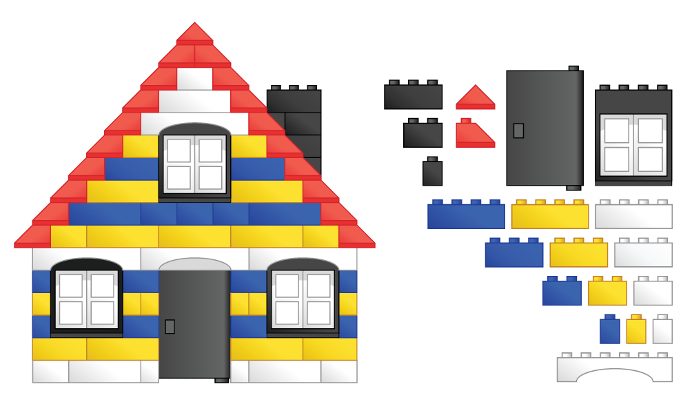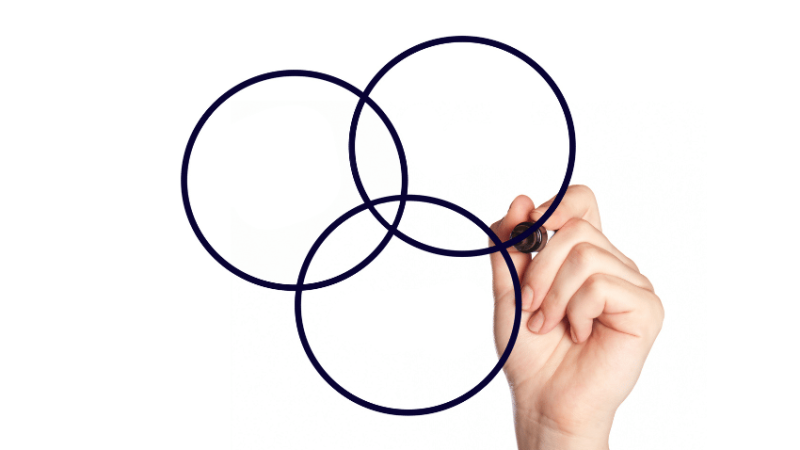Maths Mastery Could Enable Everyone To Succeed, Once We Understand What It Really Means

Mastery is much more than a fad, so once everyone knows what it is and why it's a good idea we can build a curriculum that lets learners flourish

After a few years of talk from the NCETM/maths hubs and Ofsted, we seem to have reached the point where most maths teachers have at least heard of mastery, if only because of the much-reported Shanghai teacher exchanges. What many don’t seem to know, however, is what mastery actually is, and why it is a genuinely good idea.
Despite what some schools seem to think, mastery is much more than an educational buzzword or bandwagon. A model of schooling formalised in the early 20th century, mastery stipulates that a group of students does not move onto a higher-level topic until they are ready, and provides expert teaching in order to get them to this place. Thinking of maths as the hierarchical subject it is, this is an extremely important idea.
Missing links
Around 40% of English 16-year-olds did not achieve a C in GCSE mathematics over each of the last four years; this means that a significant number of our students have extremely poor mathematical understanding and scant knowledge on the whole. How do we get to the point where, after twelve years of schooling, so many can do so little? Are they really incapable, or can we do better?
Apart from the usual underachievement suspects – poor behaviour, a shortage of subject specialists, a general national antipathy towards mathematics – curriculum design plays quite a part. How many times have you been teaching algebra to your class in the full knowledge that they have poor arithmetic skills? How often have they tried to find a common denominator to multiply fractions because somewhere in the back of their minds they know that’s ‘what you do’ with fractions?
Many schemes of work have students adding fractions over two or three lessons before moving onto scatter graphs or some angle work for the next few. In such a setup they never have the time to really get to grips with a new skill before they are forced onto the next one, and they certainly don’t have the time to apply the skill in lots of contexts to develop any fluency with it.
Other schemes of work take a half term on ‘algebra’ and might teach manipulating expressions, solving equations and inequalities and graph work in those six weeks.
With this arrangement, students oscillate between topics of varying difficulty and then don’t meet half of it again for months, or even years. Either way, teachers find themselves asking, “Why can’t you do this? I taught it to you last year!”.
Building up
Mastery, substantiated by the findings of modern-day cognitive science, is different. Imagine maths as a building, where each layer of bricks has to be firmly in place before the next is added; now start to place the objectives of the curriculum in order, from the lowest foundations to the apex of the roof.
I expect most maths teachers would put place value and arithmetic first, followed by a more complex understanding of number – powers and roots, fractions, decimals, percentages – and proportional reasoning (much of which must be grasped before understanding percentages), before even considering any algebra, geometry or statistics (this is a brilliant exercise to do as a department, by the way; writing all the objectives on pieces of paper and ordering them brings out some fascinating discussion).
Welcome to a mastery curriculum. Units of work are deliberately sequenced to build upon prior knowledge, the most foundational topics being given absolute priority.
What is especially clever here is the deliberate application of what cognitive science calls interleaving. A mastery curriculum does not allow a topic to be taught and then forgotten about, rather the topic is interleaved wherever possible into subsequent topics. Here’s an example: an early unit could be on the four operations, both mental and written methods with integers and decimals.
Later on we would study negative numbers and the techniques previously learnt are brought back into play. Next we learn about the order of operations, and once we have grasped this with positive integers we reintroduce decimals and negative numbers.
Trending
In the later unit on fractions we bring in questions employing order of operations and negatives, and when we get to substitution we make sure students substitute with all the types of numbers met so far.
In order to do all this well, and to give students time to access all manner of possible questions within a topic area, each unit is much longer than we would traditionally allow. In an ideal mastery curriculum a group of students would not move on at all until they had sufficiently grasped the topic.
In practice what some schools are doing is allowing much more time than they normally would for a unit so that those who struggle most are given sufficient opportunity to learn. If a teacher finds that a group of students has become secure in the core objectives they provide them with enrichment and more challenge within the topic area until the unit is finished.
Take arithmetic for instance, if you can apply a column method confidently, why not do it in binary? Almost every topic on the school curriculum can be extended well beyond the curriculum, provided the teacher knows how (and here is a call for subject experts if ever there was one) – and there is a wealth of complex problems on every subject, especially from organisations like Nrich and the UKMT.
With this setup our best mathematicians are being stretched further than normal and those who need more time and practice in order to grasp concepts are allowed it.
Opportunities for all
Another important feature of a mastery system is the effective use of assessment: for diagnostics at the start of a unit to enable effective, targeted teaching; for regular retrieval practice (it has been demonstrated that our brains remember something for a longer time when we are forced to retrieve from partially-forgotten memory); and for summative purposes at the end of a unit, to assess whether or not the group is ready to move on.
The core philosophy of mastery is that practically everyone can achieve and learn what is being taught, provided they are given enough time and sufficiently expert teaching. Concrete manipulatives are used with those who cannot yet visualise a concept; pictures (such as a bar model) are used with those who no longer need a concrete exemplar but cannot yet abstract; and those who are able to abstract mathematically do so with a strong understanding of what has come before.
Teachers know what misconceptions will arise and give students ample opportunity to address and overcome these, and all students are afforded the opportunity to learn, recall, practise and problem-solve until they can do well.
And so completes the triumvirate of mastery: purposeful curriculum sequencing and design, intelligent diagnostic and summative assessment, and high expectations placed on every single student, with the resources and skill to meet these expectations. Perhaps if every school began to teach maths like this we could stem the tide of negativity towards, and failure in, our wonderful subject?
Jemma Sherwood is Head of maths and SLE at Haybridge High School in Worcester.











